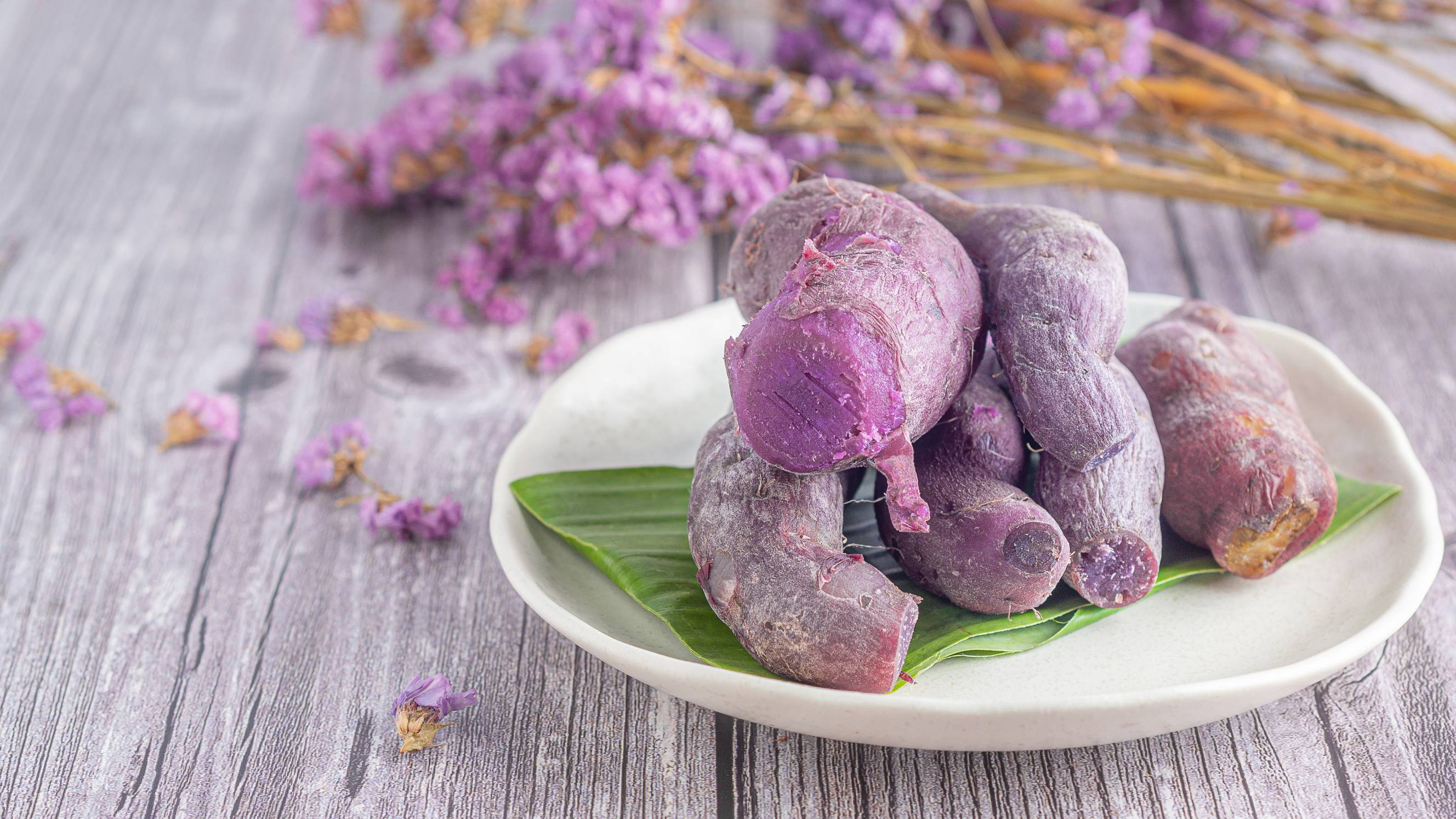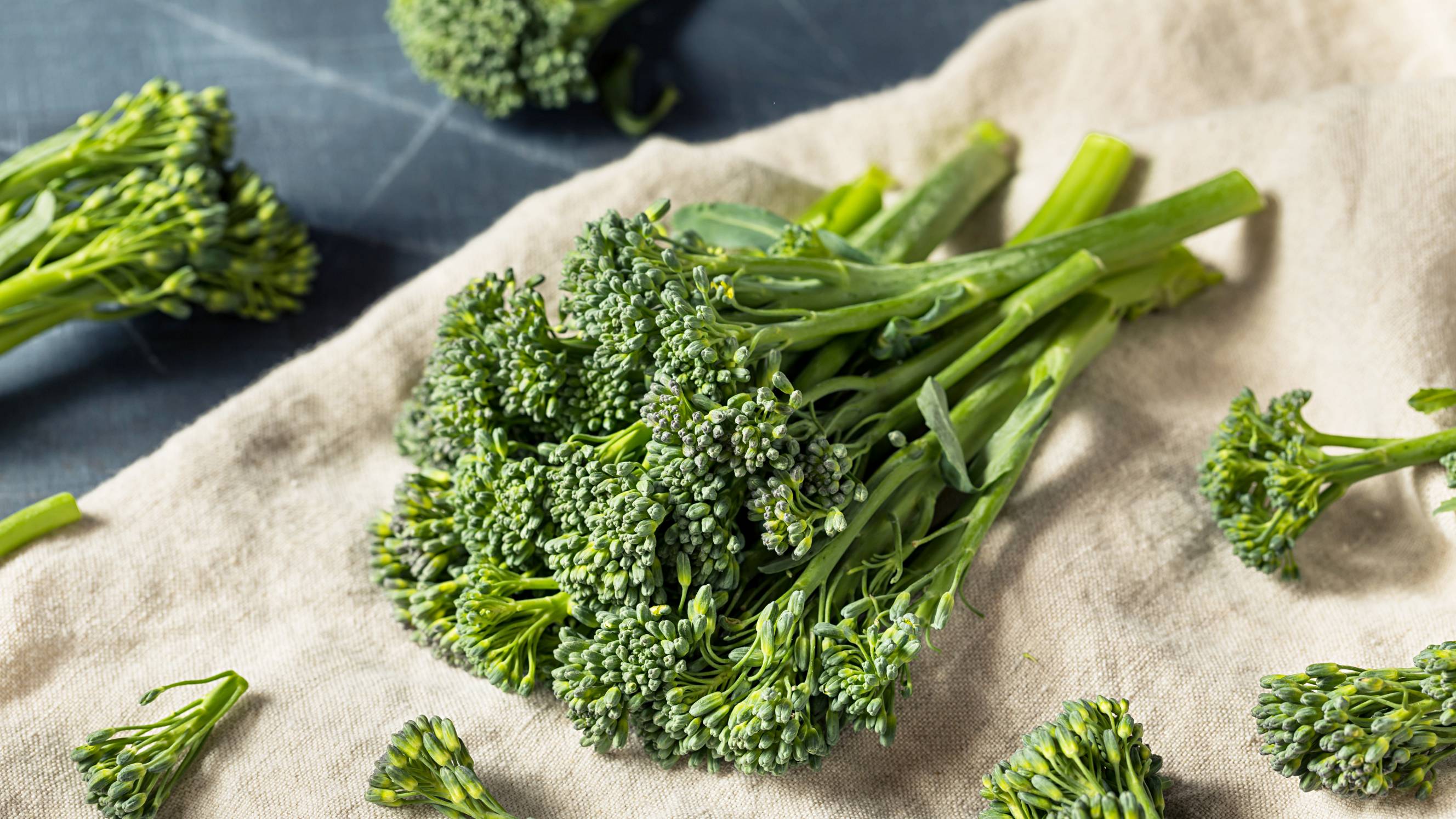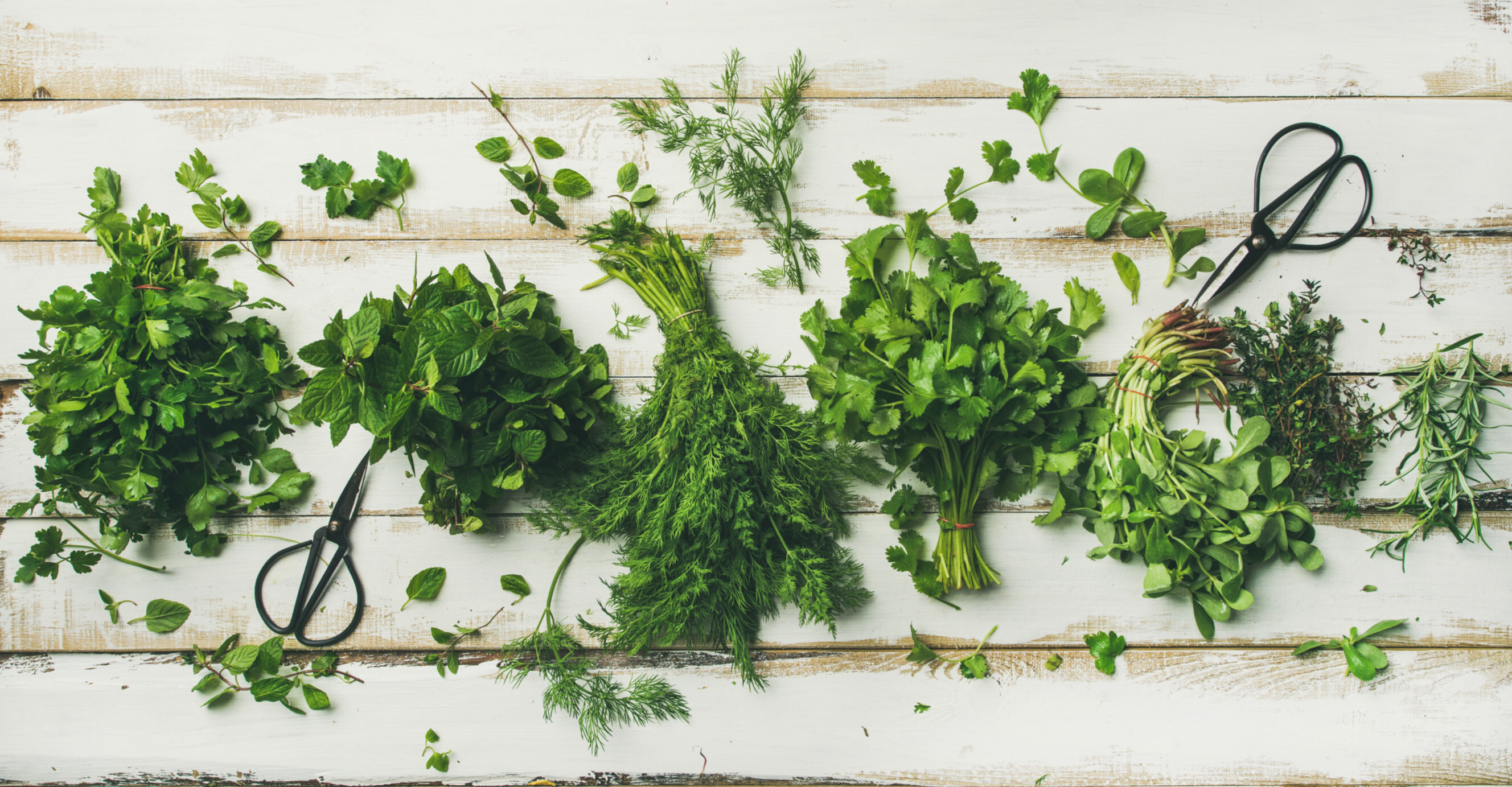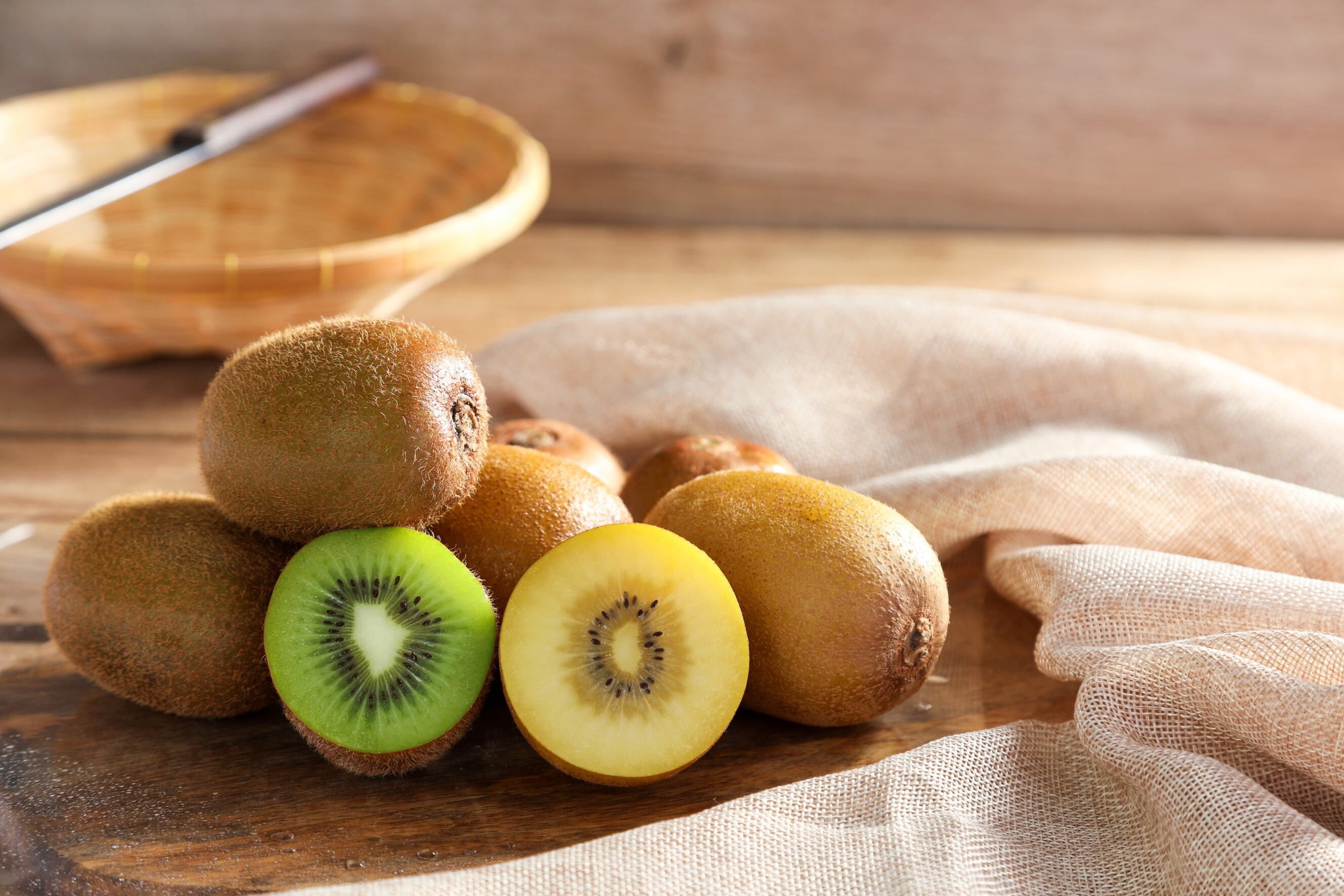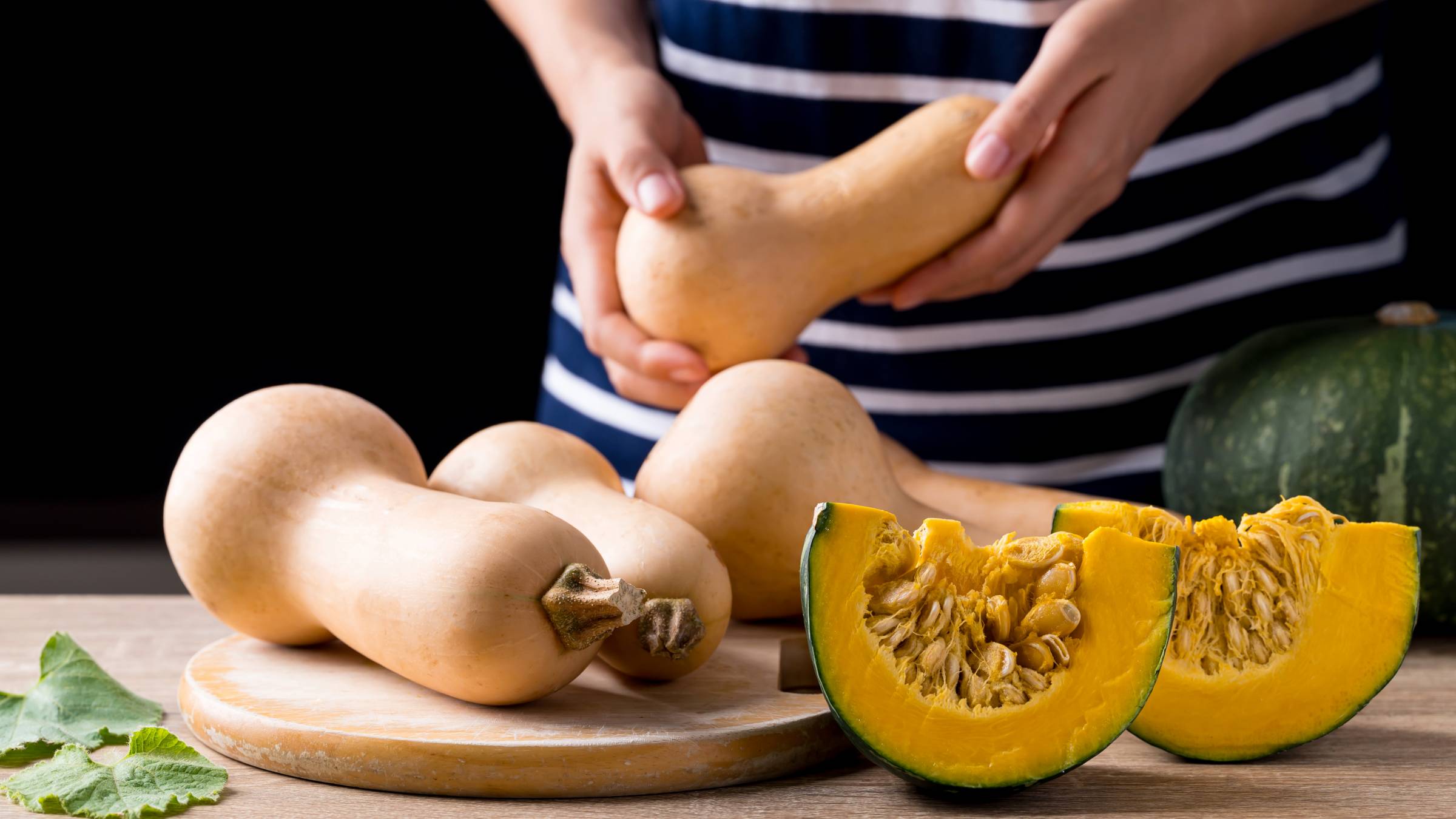
- Home/
- Comparisons/
- Fresh Food Delivery/
- Butternut vs Kent Pumpkin
Butternut vs Kent pumpkin: Which should you get?
Comparing butternut and Kent pumpkins based on cooking time, taste, and more
Last Updated on

Written by Ana K.
Contributor
Read more about our contributor
Key Facts
- Butternut pumpkins are light yellow and shaped like a pear. They are sweet and dry, making them suitable for a variety of dishes.
- Kent pumpkins are round squashes that are green in colour, with specks of brown and yellow. They have a sweetness that lends itself well to salads and baked goods.
Pumpkins, which are under the winter squash nomenclature, are fruits typically used as a cooking ingredient. They range not just in taste but also in appearance—from pale green to bright orange and from oval to bulbous. Because there are several types to choose from—including butternut vs Kent pumpkin—it may be confusing to figure out which one works well with which dish.
As such, this article will serve as a guide by discussing the qualities of Kent vs butternut pumpkin—two popular pumpkin varieties in Australia.
What is a butternut pumpkin?
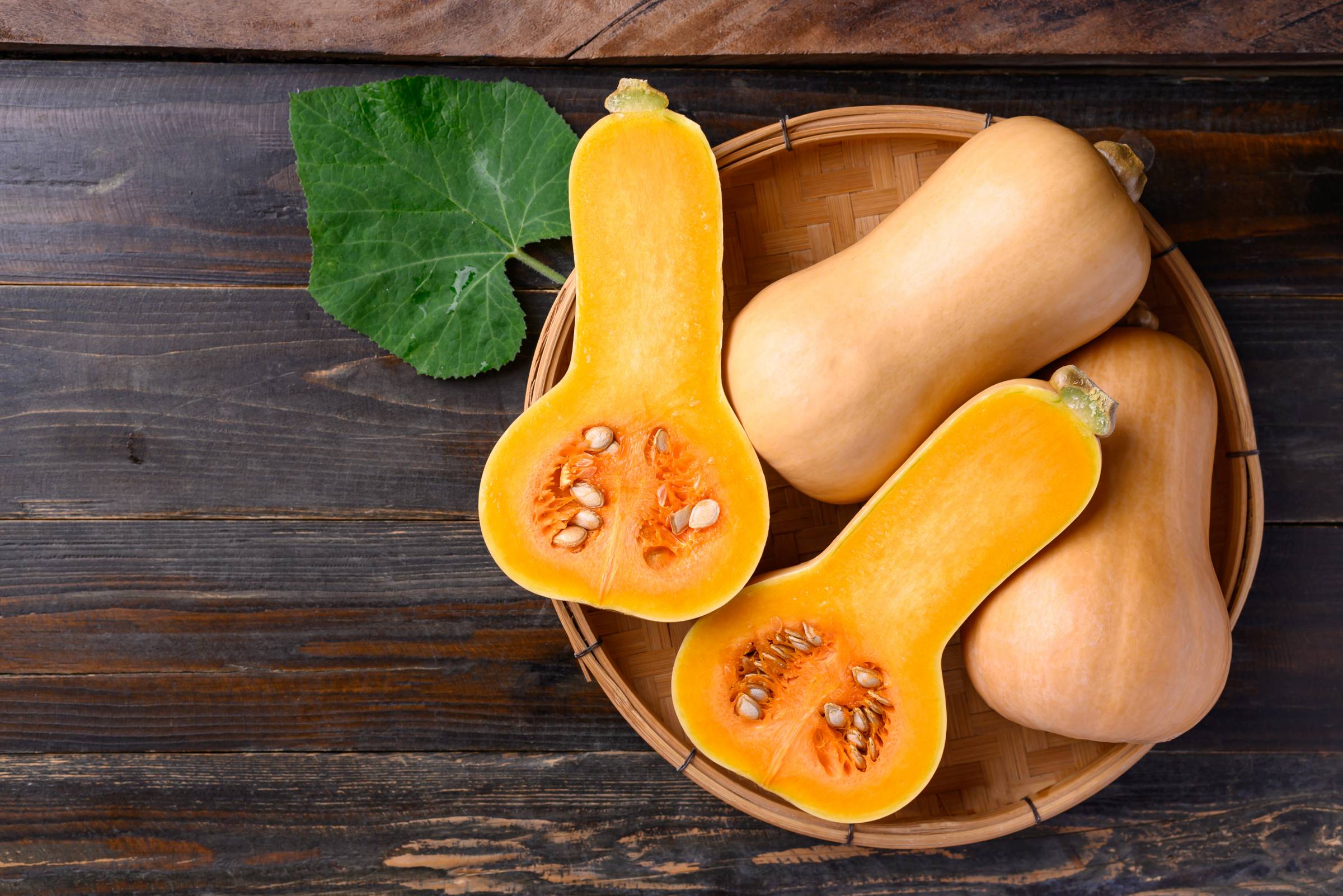 Several fresh butternut pumpkins displayed on a table (Source: iStock)
Several fresh butternut pumpkins displayed on a table (Source: iStock)
Pale yellow on the outside and orange on the inside, butternut pumpkins are a favoured ingredient in many dishes due to their sweetness’s versatility. They typically weigh 2 kilogrammes and are known for their bell-shaped appearance.
What is a Kent pumpkin?
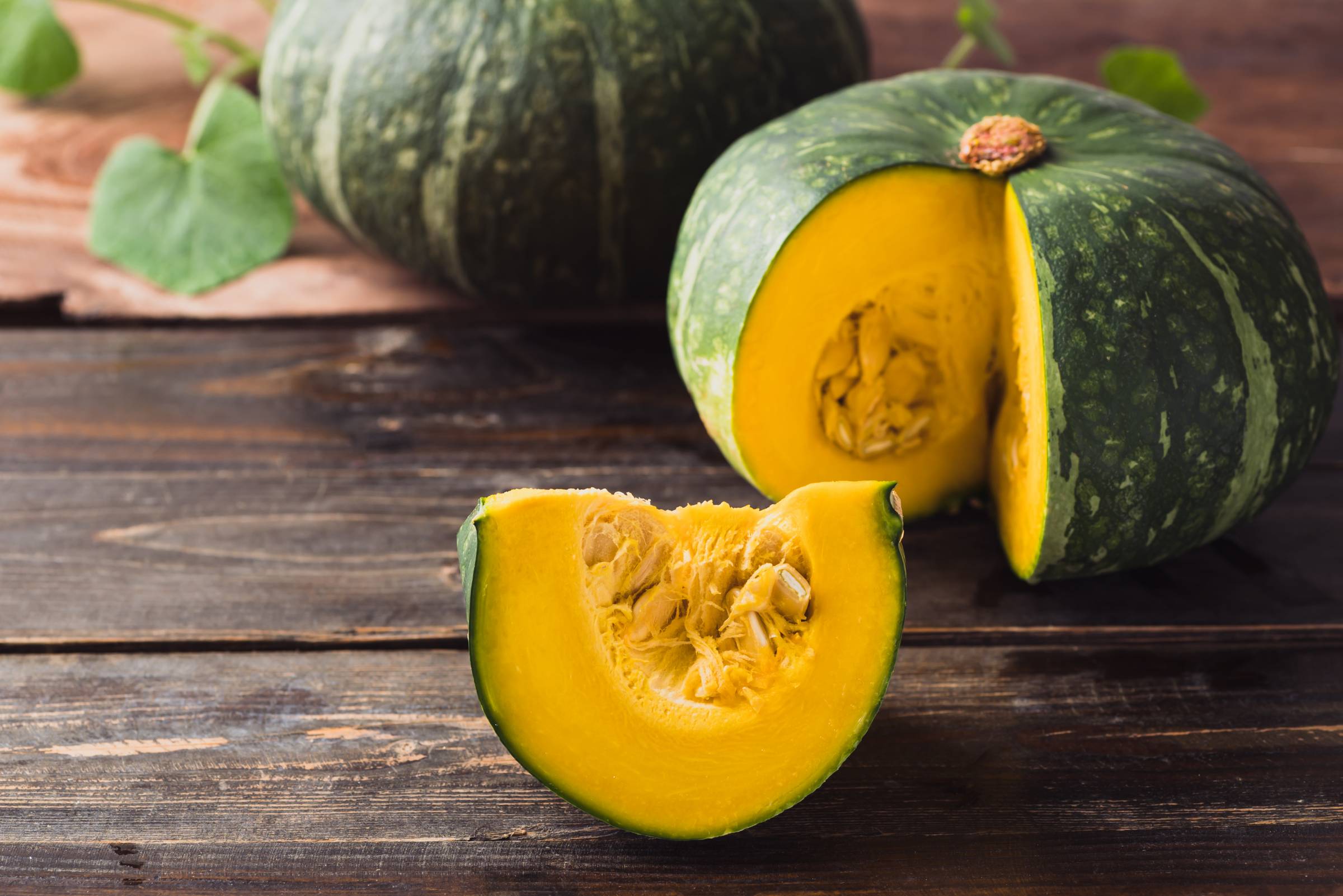 Fresh Kent pumpkins ready for cooking (Source: iStock)
Fresh Kent pumpkins ready for cooking (Source: iStock)
Kent pumpkin, also called Japanese or Jap pumpkin, is part of the Cucurbita moschata species (just like butternut pumpkin). Their skin’s green colour is speckled with yellow and brown, while their flesh is yellow-orange. They are round in shape and have an average weight of 4 kilogrammes. Taste-wise, they are also nutty and sweet.
Kent vs butternut pumpkin: Which is better for your needs?
Check out which type of pumpkin—butternut or Kent—you should pick based on the following aspects:
In terms of cost
Both varieties are affordable, but Kent pumpkin tends to be more budget-friendly than butternut squash. Across different seasons, supermarkets and online grocery stores have a price discrepancy of around $1 to $2 per kilogramme.
In terms of cooking time
Cutting a butternut pumpkin may take longer due to its tough skin and dense flesh. Meanwhile, one can slice through a Kent pumpkin easily. It also tends to soften faster than butternut when being cooked. However, do note that the time it’ll take to put a meal together varies based on the type of cooking or baking done.
In terms of taste
Kent pumpkins have a nutty and very sweet flavour profile—similar to that of sweet potatoes—that works perfectly with salads. On the other hand, butternut pumpkins’ brand of sweetness and nuttiness makes them the right blend for more types of meals.
In terms of nutritional value
When comparing Kent pumpkin vs butternut nutrition-wise, one can see that both are low-carb and non-fat. In line with this, there’s not much difference in Kent pumpkin vs butternut in calorie content. Both are also good sources of fibre, vitamins, and minerals. But for health nuts, know that butternut pumpkins have more vitamin A in them.
In terms of versatility
Butternut pumpkin can be prepared in several ways—mashed, cubed, or julienned, for instance—and has a taste that complements several sweet, spicy, and savoury meals. Aside from being the best pumpkin for roasting (especially with blue cheese), it can be used as an ingredient for pasta sauces, sides, and most cooked dishes. Meanwhile, Kent is one of the best pumpkins for baking quiches and pies. In terms of texture, both become creamy when cooked.
In terms of availability
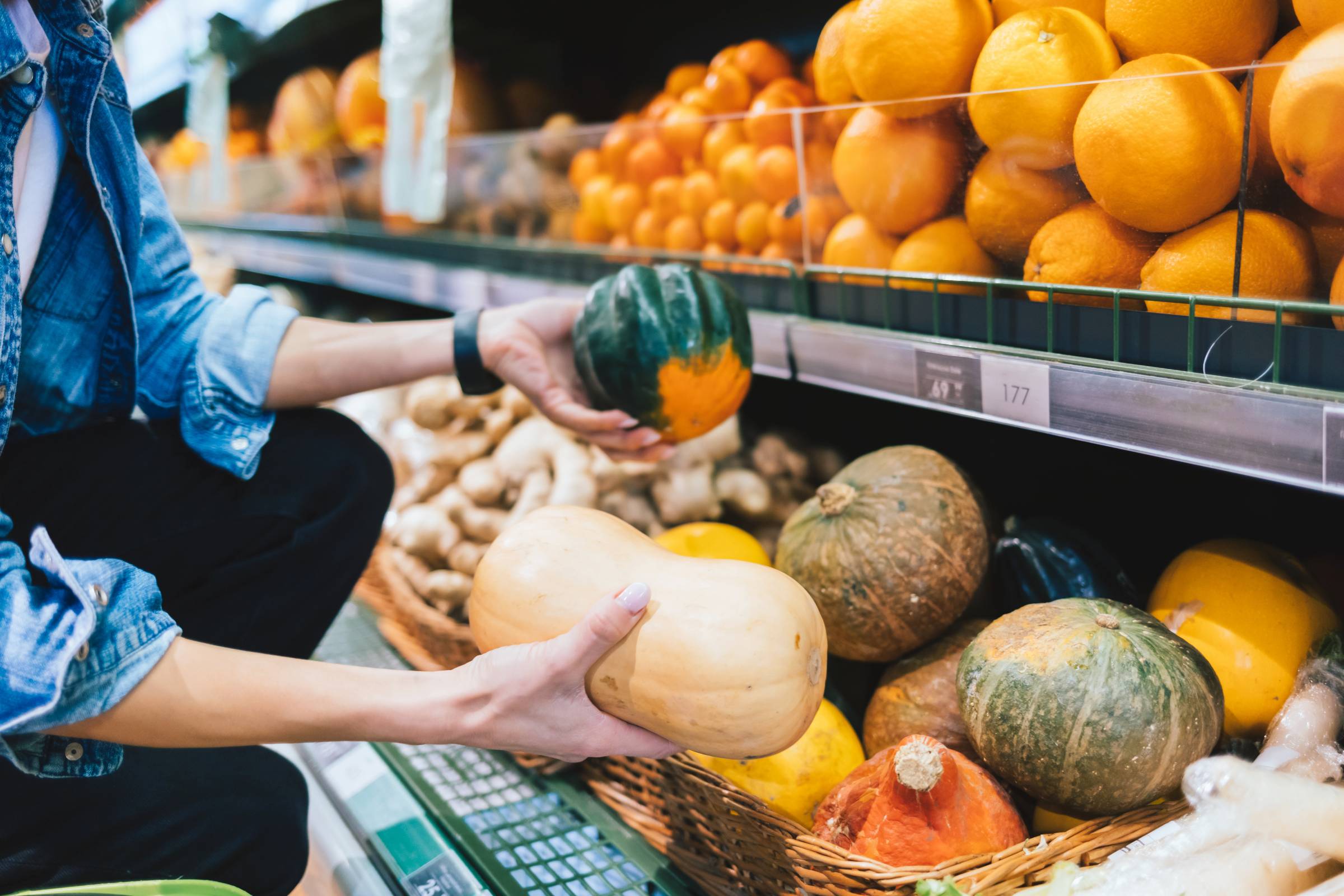 A shopper comparing butternut and Kent pumpkins in a grocery store (Source: iStock)
A shopper comparing butternut and Kent pumpkins in a grocery store (Source: iStock)
Both pumpkin varieties are annual plants that are grown in various regions, including South and Western Australia, the Northern Territory, New South Wales, Victoria, Queensland, and Tasmania. They are also easily accessible and available in markets and grocery stores throughout the country all year round.
In terms of growth difficulty
Butternut and Kent pumpkins are usually planted during springtime. If you are planning to have your own pumpkin patch, know that it takes 20 to 25 weeks to harvest Kent pumpkins. Meanwhile, butternut squashes can mature in 15 to 18 weeks. Pumpkin seeds of both types are relatively easy to grow as long as they are planted in fertile soil and located in a place with plenty of sunlight.
Enjoy fresh produce with Airtasker
Realised you’re missing some ingredients while in the middle of meal prep? Or simply pressed for time that you can’t squeeze some grocery shopping into your schedule? In instances like these, you can hire someone from Airtasker to buy and transport fresh veggies, organic food, and pumpkins and other fruits right to your doorstep.
Just post a task on the website and include some details relevant to your fresh food delivery request, such as your location, budget, and grocery list. Pick a Tasker, then let them take care of the job for you. Taskers can also offer ready-made food delivery in different areas, such as food delivery in Melbourne or food delivery in Perth. If you’re satisfied with their service, let them know by posting a five-star review on their profile.
Learn more about our contributors

Written by Ana K.
Contributor
Ana always puts a premium on accuracy, clarity, and style when writing—a practice that her English degree has instilled in her. She excels at covering topics related to pet care, home and interior design, and food, which count among her varied interests. She also enjoys nature and street photography, as well as travelling. Overall, Ana uses her love for research to engage Airtasker readers with fun, practical content.
Butternut vs Kent pumpkin
| Butternut Pumpkin |
Kent Pumpkin |
|
|---|---|---|
| Cost | More expensive |
More budget-friendly |
| Cooking Time | Harder to slice, longer cooking time |
Easy to cut through, softens faster |
| Taste | Sweet and nutty |
Much sweeter, similar to sweet potato |
| Nutritional Value | Low calorie content; rich in fibre, vitamins, and minerals; has more vitamin A |
Low calorie content; also rich in fibre, vitamins, and minerals |
| Versatility | Suitable for more types of dishes |
Perfect for baked goods and salads |
| Availability | Very accessible all year round |
Also available throughout the year |
| Growth Difficulty | Easy to grow, matures faster |
Also easy to grow, takes a few weeks more to mature |
FAQs on butternut and Kent pumpkins
Some pumpkin recipes call for a Kent squash specifically. Nevertheless, it’s fine to replace it with butternut squash in certain cases—like when making a pumpkin pie—due to this variety’s versatility.
Kent pumpkins last longer since they can be stored for four to five months. Meanwhile, whole pumpkins of the butternut variety can be stored for no longer than four months. If cooked and placed in a freezer, both types can last up to half a year.
Other types of pumpkin grown in Australia include:
Golden nugget pumpkin
Queensland blue pumpkin
Sweet dumpling pumpkin
Jarrahdale pumpkin
Find fresh food delivery taskers, fast
Post a task
Related articles
